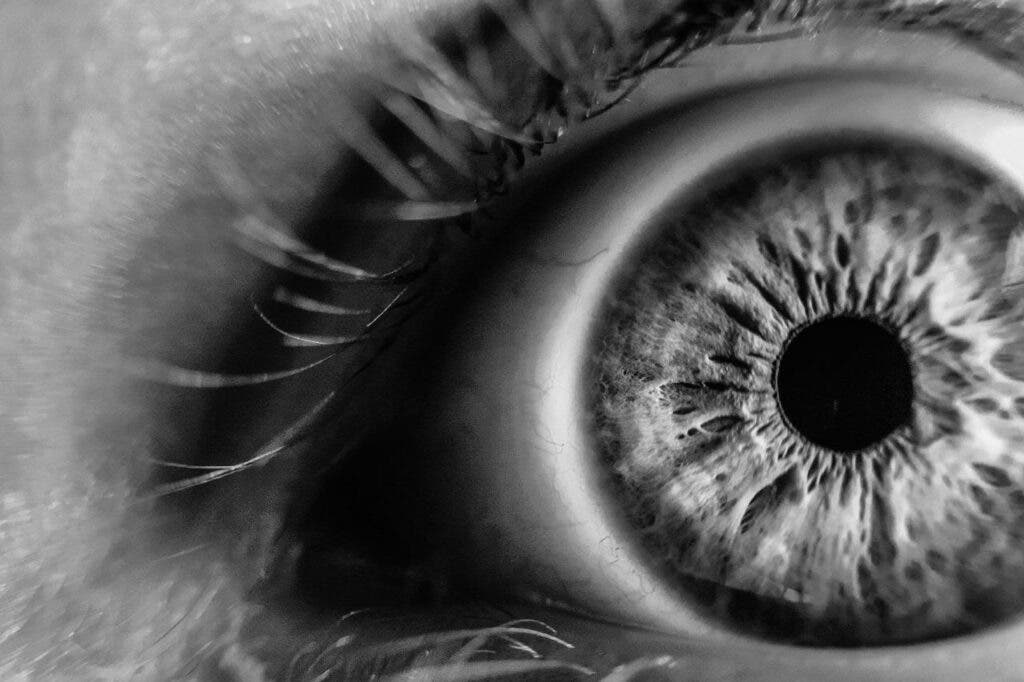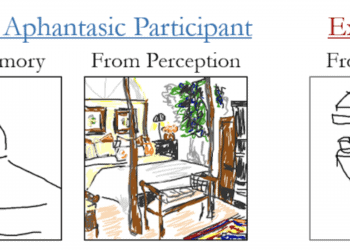Our eyes can help us identify people with aphantasia, according to new research. Aphantasia is a phenomenon in which people are unable to visualize objects or scenes in their minds.

Researchers at the University of New South Wales, Sydney, report that the pupils of people with aphantasia do not show a response when they are asked to imagine dark and light objects. This can serve as a reliable diagnosis tool, they add, because the pupils of people without aphantasia show a response — called a pupillary reflex — in this situation.
It’s all in the eyes
“The pupillary reflex is an adaptation that optimizes the amount of light hitting the retina,” says Professor Joel Pearson, senior author on the paper. “And while it was already known that imagined objects can evoke so-called ‘endogenous’ changes in pupil size, we were surprised to see more dramatic changes in those reporting more vivid imagery. This really is the first biological, objective test for imagery vividness.”
The researchers worked with 42 individuals who self-reported as having a visual imagination. These participants were then fitted with glasses that tracked their eye movements and the size of their pupils during a series of lab experiments. Throughout these experiments, the participants were presented with bright or dark shapes against a gray background, with the researchers tracking the response of their pupils to these elements.
Bright shapes (which the team explains was comparable to looking up at a bright sky in light intensity) evoked a pupillary constriction response in these patients, while dark shapes caused their pupils to dilate.
The next step involved testing the participants’ capacity to visualize objects; they were asked to imagine the same light or dark shapes from the first step. They had to do this with their eyes open to allow for their pupils to be tracked, and later on report on how vivid those images were in their mind.
This step revealed that the participants’ pupils dilated and constricted appropriately, based on the brightness of the shapes, even when they were only imagining them. Furthermore, the magnitude of their pupillary response corresponded to the vividness of the images in the participants’ minds.
Finally, the team underwent the same steps with 18 participants with self-reported aphantasia. During exposure to the shapes, these showed the same responses as the first group — pupillary constriction to bright shapes and dilation to dark ones. However, they did not show a differentiated response in their pupils during the second experiment, when they were asked to imagine the shapes.
“One of the problems with many existing methods to measure imagery is that they are subjective, that is to say they rely on people being able to accurately assess their own imagery. Our results show an exciting new objective method to measure visual imagery,” says Prof Pearson, “and the first physiological evidence of aphantasia. With over 1.3 million Australians thought to have aphantasia, and 400 million more internationally, we are now close to an objective physiological test, like a blood test, to see if someone truly has it.”
The aphantasic participants were further asked to visualize four shapes at a time to ensure that they were putting as much effort as they could into trying to visualize imagery. The team reports that they did see a difference in pupil activity in the participants at this step. Greater mental effort does have an effect on pupil dilation, the team explains, and this step served to prove that the participants were actually doing their best during the experiment, and not simply pretending to go through the motions.
“Our pupils are known to get larger when we are doing a more difficult task,” says Lachlan Kay, Ph.D. candidate in the Future Minds Lab, UNSW. “Imagining four objects simultaneously is more difficult than imagining just one. The pupils of those with aphantasia dilated when they imagined four shapes compared to one, but did not change based on whether the shapes were bright or dark. This indicated that the participants with aphantasia were indeed trying to imagine in this experiment, just not in a visual way”.”The aphantasic pupil response to the four objects condition is also a really exciting finding,” adds Prof Pearson, “because for the first time we have strong biological evidence that those with aphantasia are really trying to create a mental image, putting to rest claims that they may simply not be attempting to create a mental image.”
The paper “The pupillary light response as a physiological index of aphantasia, sensory and phenomenological imagery strength” has been published in the journal eLife.




